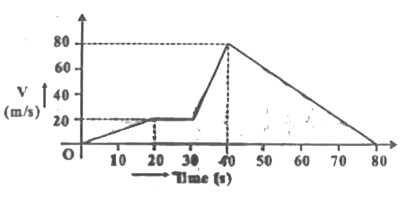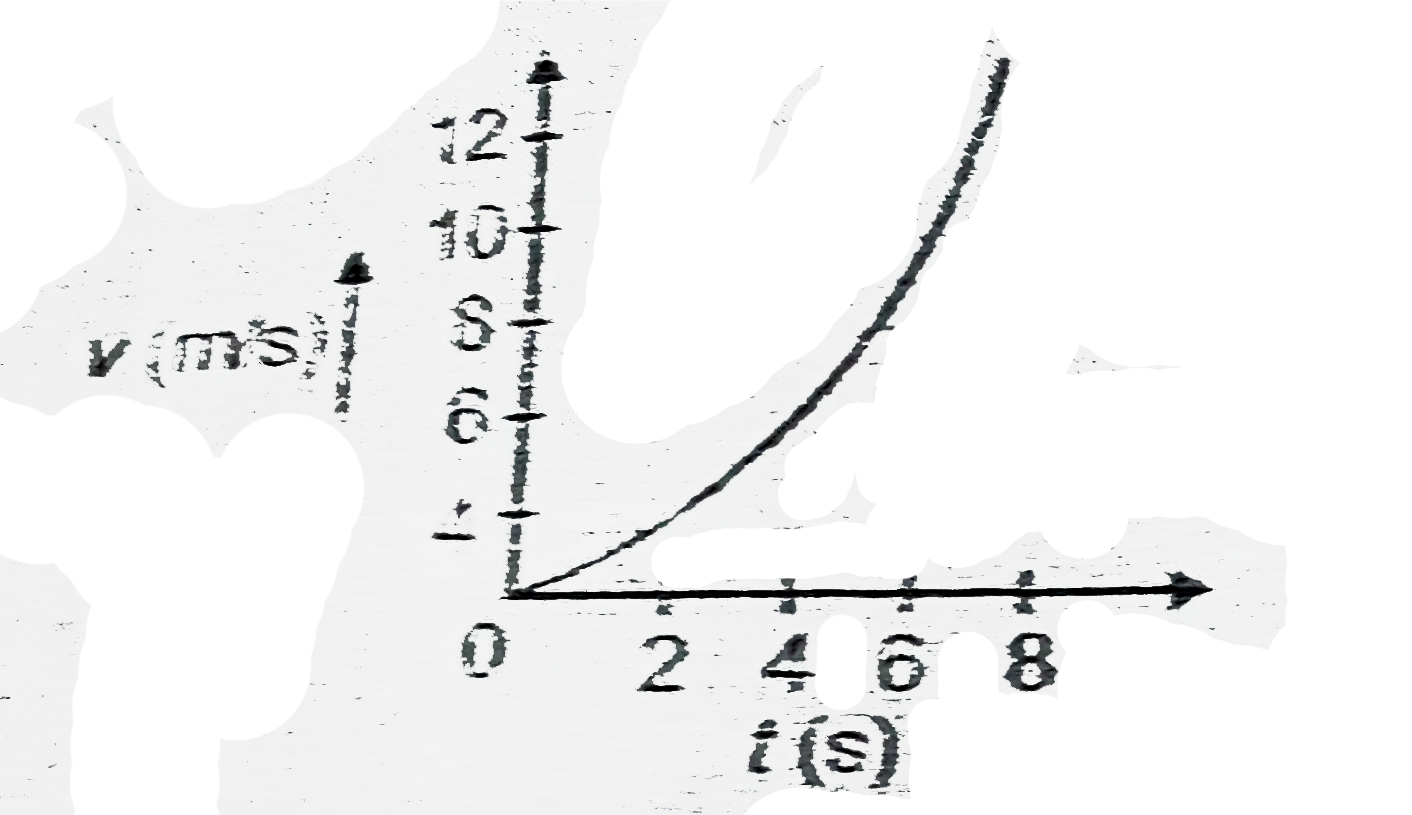Draw the velocity-time graph of an object moving with uniform negative acceleration.
To draw the velocity-time graph of an object moving with uniform negative acceleration, follow these steps:
1. Understand the Concept of Uniform Negative Acceleration:
- Uniform negative acceleration means that the object is slowing down at a constant rate. This implies that the velocity of the object is decreasing over time.
2. Identify the Axes:
- On the graph, the vertical axis (y-axis) will represent the velocity (v) of the object.
- The horizontal axis (x-axis) will represent time (t).
3. Determine the Slope:
- Since the acceleration is negative, the slope of the velocity-time graph will be negative. This indicates that as time increases, the velocity decreases.
4. Draw the Graph:
- Start by marking a point on the y-axis to represent the initial velocity (v₀) of the object at time t = 0.
- From this point, draw a straight line with a downward slope. The line should extend downwards as time progresses, indicating that the velocity is decreasing uniformly.
- The line should not curve; it must remain straight to represent uniform acceleration.
5. Label the Graph:
- Label the axes: "Velocity (v)" on the y-axis and "Time (t)" on the x-axis.
- Optionally, you can label the initial velocity point and indicate the direction of decreasing velocity.
Final Graph:
- The resulting graph will be a straight line sloping downwards from left to right, starting from the initial velocity and approaching zero or a negative value as time increases.
- Uniform negative acceleration means that the object is slowing down at a constant rate. This implies that the velocity of the object is decreasing over time.
- On the graph, the vertical axis (y-axis) will represent the velocity (v) of the object.
- The horizontal axis (x-axis) will represent time (t).
- Since the acceleration is negative, the slope of the velocity-time graph will be negative. This indicates that as time increases, the velocity decreases.
- Start by marking a point on the y-axis to represent the initial velocity (v₀) of the object at time t = 0.
- From this point, draw a straight line with a downward slope. The line should extend downwards as time progresses, indicating that the velocity is decreasing uniformly.
- The line should not curve; it must remain straight to represent uniform acceleration.
- Label the axes: "Velocity (v)" on the y-axis and "Time (t)" on the x-axis.
- Optionally, you can label the initial velocity point and indicate the direction of decreasing velocity.
- The resulting graph will be a straight line sloping downwards from left to right, starting from the initial velocity and approaching zero or a negative value as time increases.
Topper's Solved these Questions
- MOTION IN A STRAIGHT LINEBOOK - AAKASH INSTITUTE ENGLISHCHAPTER - MOTION IN A STRAIGHT LINEEXERCISE - EXERCISE
29 Videos
- MOTION IN A STRAIGHT LINEBOOK - AAKASH INSTITUTE ENGLISHCHAPTER - MOTION IN A STRAIGHT LINEEXERCISE - ASSIGNMENT (SECTION - A)
58 Videos
- MOTION IN A STRAIGHT LINEBOOK - AAKASH INSTITUTE ENGLISHCHAPTER - MOTION IN A STRAIGHT LINEEXERCISE - ASSIGNMENT (SECTION - D)
15 Videos
- MOTION IN A PLANEBOOK - AAKASH INSTITUTE ENGLISHCHAPTER - MOTION IN A PLANEEXERCISE - Assignement section -J (Aakash Challengers Questions)
7 Videos
- MOTION IN STRAIGHT LINEBOOK - AAKASH INSTITUTE ENGLISHCHAPTER - MOTION IN STRAIGHT LINEEXERCISE - Assignment (SECTION - J)
2 Videos
Similar Questions
Draw the position-time graph of an object moving with positive accceleration.
View SolutionWhich of the following x - t graphs shows an object moving with negative acceleration?

View SolutionDraw the position-time graph of a moving object, moving with zero acceleration.
View SolutionDraw the velocity-time graph of an object whose speed is increasing at uniform rate but moving with negative acceleration.
View SolutionDraw areal velocity time graph for Mars.
View SolutionDraw the shape of the velocity-time graph for a body moving with (a) uniform velocity, (b) uniform acceleration.
View SolutionDraw the x-t graph of an object in uniform motion.
View SolutionThe velocity-time graph of a moving object is given in the figure. Draw the acceleration versus time and displacement versus time graph. Find the distance travelled during the time interval when the acceleration is maximum . Assume that the particle starts from origin.

View SolutionThe velocity-time graph of an object is given below. Calculate the average acceleration of the object in the time interval of 4 s to 6 s.

View SolutionDraw the position-time graph of a stationary object.
View Solution
